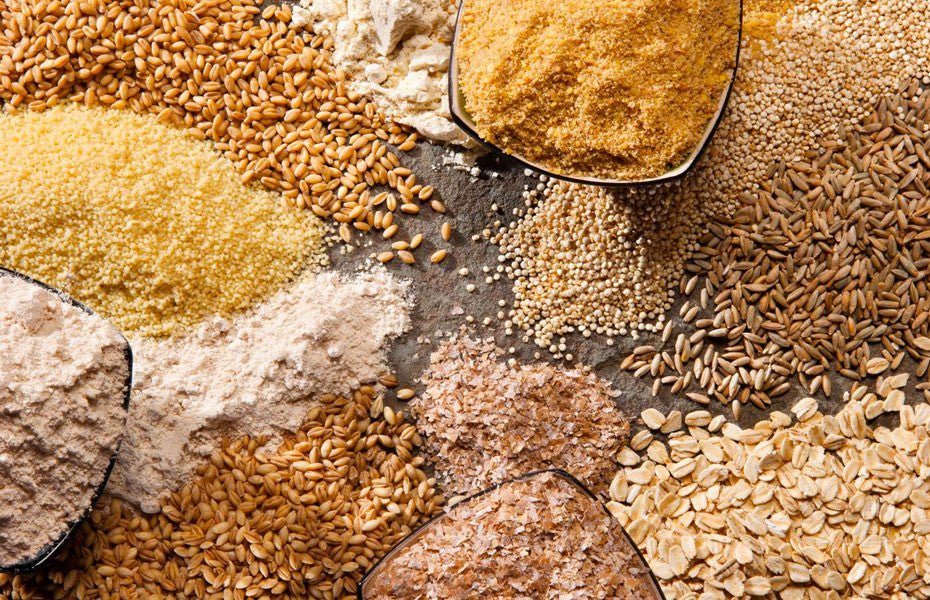Истакнути
- Преузми линк
- X
- Имејл адреса
- Друге апликације
How Ancient Grains Can Benefit People with Type 2 Diabetes

Ancient grains have been cultivated for thousands of years, yet their nutritional profiles and health benefits have recently garnered renewed interest, particularly for individuals managing Type 2 diabetes. Unlike modern refined grains, ancient grains are typically consumed in their whole form, preserving their nutrient density and offering numerous health benefits. Here’s how incorporating ancient grains into the diet can benefit those with Type 2 diabetes.
What Are Ancient Grains?
Ancient grains are cereals and seeds that have remained largely unchanged over the last several hundred years. Popular ancient grains include quinoa, farro, barley, millet, amaranth, teff, spelt, and sorghum. These grains are known for their rich nutritional profiles, providing essential vitamins, minerals, fiber, and protein.
Nutritional Benefits of Ancient Grains
Ancient grains are packed with nutrients that are beneficial for everyone, particularly those with Type 2 diabetes:
High Fiber Content: Fiber is crucial for diabetes management as it slows the absorption of sugar into the bloodstream, helping to prevent spikes in blood glucose levels. Ancient grains like barley, quinoa, and farro are excellent sources of dietary fiber.
Low Glycemic Index (GI): Many ancient grains have a low to moderate glycemic index, meaning they cause a slower, more gradual rise in blood glucose levels. This is beneficial for maintaining stable blood sugar levels. For example, barley and quinoa have lower GIs compared to refined grains like white rice and white bread.
Rich in Essential Nutrients: Ancient grains are rich in magnesium, a mineral that plays a role in carbohydrate metabolism and has been shown to improve insulin sensitivity. They also contain antioxidants, which help reduce inflammation and oxidative stress, common issues in diabetes.
High Protein Content: Some ancient grains, such as quinoa and amaranth, are complete proteins, containing all nine essential amino acids. A diet higher in protein can help with satiety and weight management, which is particularly beneficial for those with Type 2 diabetes.
Specific Benefits of Popular Ancient Grains
Quinoa
Quinoa is a gluten-free grain known for its high protein and fiber content. It has a low glycemic index, making it a suitable option for maintaining stable blood sugar levels. Additionally, quinoa is a good source of magnesium and iron.
Barley
Barley is exceptionally high in soluble fiber, specifically beta-glucan, which has been shown to improve glycemic control and lower cholesterol levels. It also has a low GI and can be a versatile addition to soups, salads, and stews.
Farro
Farro is an ancient wheat variety that is high in fiber and protein. It is also rich in antioxidants, vitamins, and minerals, including magnesium and zinc, which support overall health and metabolic function.
Millet
Millet is a gluten-free grain that is high in fiber and magnesium. It has a low glycemic index and can be used in various dishes from porridge to bread. Its nutrient profile supports insulin sensitivity and overall metabolic health.
How to Incorporate Ancient Grains into Your Diet
Incorporating ancient grains into your diet is easy and can add variety and nutritional benefits to your meals. Here are some tips:
- Start with Breakfast: Use quinoa or millet as a base for breakfast porridge. Top with nuts, seeds, and fresh fruit for added nutrients and flavor.
- Salads and Side Dishes: Add cooked farro or barley to salads for extra fiber and texture. These grains also make excellent side dishes, complementing proteins and vegetables.
- Healthy Baking: Replace refined flour with spelt flour in baking recipes to increase the fiber and protein content of your baked goods.
- Main Courses: Use ancient grains as a base for pilafs, grain bowls, and stir-fries. Combine with vegetables, lean proteins, and healthy fats for balanced, diabetes-friendly meals.
Conclusion
Ancient grains offer a nutritious and beneficial addition to the diet of individuals with Type 2 diabetes. Their high fiber content, low glycemic index, and rich nutrient profile help manage blood sugar levels and support overall health. By incorporating these grains into daily meals, individuals can enjoy diverse and delicious options while maintaining better control over their diabetes. Embrace the wisdom of ancient nutrition and discover how these time-honored grains can contribute to modern health.
- Преузми линк
- X
- Имејл адреса
- Друге апликације
Популарни постови
7 Health Benefits of Papaya: A Nutritional Powerhouse
- Преузми линк
- X
- Имејл адреса
- Друге апликације
Unlocking the Secrets to a Healthy Heart: Tips for Improving Heart Health
- Преузми линк
- X
- Имејл адреса
- Друге апликације
Коментари
Постави коментар